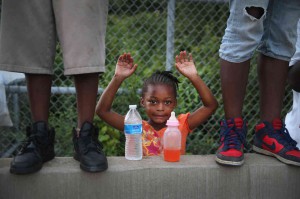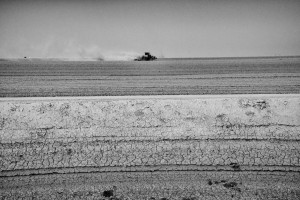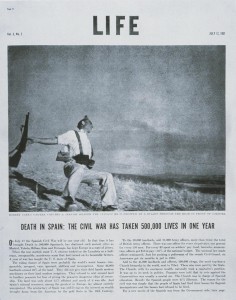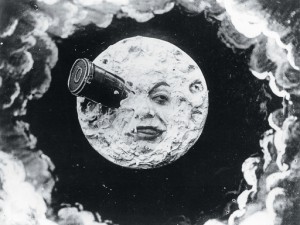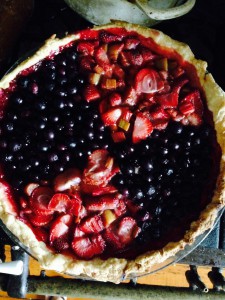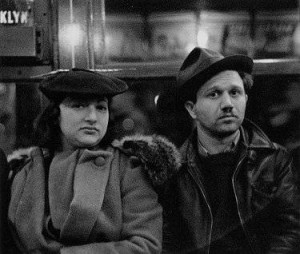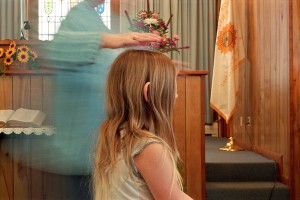Last week, we studied Robert Frank’s photographs for his groundbreaking publication, The Americans and next week, we will examine several iconic photographs related to the Vietnam War. These two lessons highlight the important issues of race and protest in American history, concerns that are on the mind of many today and on the forefront of current national news. Scott Olson, a photographer for Getty Images, captured some of the most poignant photographs of the protests that erupted after the shooting of Michael Brown, an unarmed black teenager in Ferguson, MO. The phrase “Hands Up, Don’t Shoot” and the gesture of raising one’s arms in protest have emerged as rallying cries that imitate Michael Brown’s gesture before he was shot by the police officer Darren Wilson, who was not indicted for his actions by a grand jury. This controversial ruling, and this week’s ruling on the death of Eric Garner have inspired a new wave of protests across the nation, including last weekend’s football game on national TV. Hashtags for #Ferguson, #HandsUpDontShoot, #ICantBreath have proliferated across social media. For this Discussion Topic, I would like you to read Scott Olson’s reflections about the photographs he took during the early days of the Ferguson protests, and consider them against the history of Frank’s photographs and the infamous image taken at Kent State by John Filo.
Category Archives: Discussion Topics
Week 11: The New American Dustbowl: Documenting California’s Drought
Recently we looked at photographs from the era of the Great Depression and the work of FSA photographers such as Dorothea Lange and Walker Evans. The images illustrated how drought and wind storms transformed the Great Plains into the Dust Bowl. For the past several years, California has been experiencing bad drought conditions. Access to water has been drastically cut to California’s Central Valley, a main location of farms that provide Americans with fruit, vegetables and nuts. The documentary photographer Matt Black has documented the lives of farmers and the conditions of modern-day farms. Read a short article from The New Yorker and look through the photographs, then watch a short video that features interviews and Matt Black’s photographs. What do you think of these photographs in comparison to FSA photography? Why do you think so few Americans are aware of drought conditions in California and the impact on our agricultural supply?
Read The New Yorker article “The Dry Land” here
California: Paradise Burning video
Please submit your posts by Monday, December 15th.
Week 10 Discussion Topic: Robert Capa and the Greatest War Photograph
Robert Capa, Death of a Loyalist Soldier, 1936, published in Life Magazine 1937
At the age of 23, Robert Capa took a photograph that many have labeled the greatest war photograph of all time. Taken during the Spanish Civil War, the renown of Capa’s photograph, Falling Soldier or Death of a Loyalist Soldier, reverberated around the world as it was published and republished in contemporary news magazines. However, Capa’s photo has been shadowed by controversy, including accusations of fakery. Read an analysis on the image by Capa’s biographer, Robert Whelan, on the authenticity of the photograph. Do you find his arguments convincing? Do you think Capa’s photograph is staged or not? And do you think its authenticity matters?
Robert Whelan’s discussion of Capa’s photograph
Please submit your posts by Monday, December 15th.
Week 9 Discussion Topic: Rock Star Food Behind the Scenes
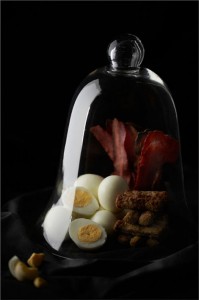
Henry Hargreaves, Rihanna’s backstage request for “hard-boiled eggs, turkey bacon, turkey sausage, at any time through out the day” from petapixel.com
As you prepare your “egg photos” for your upcoming presentations, I thought you would like to share your thoughts on these still life photographs of unusual requests made by musicians when they go on tour. When musicians perform at major concerts, their contracts include riders that outline what they need to have backstage. These riders often feature requests for food such as Lady Gaga’s request for a “small plate of cheese (nonsmelly, nonsweaty), on ice.” The photographer Henry Hargreaves with the help of a stylist produced photographs in the style of Flemish still life painting, a genre that emerged in the seventeenth-century Netherlands. The photographs are stylish and give viewers a peek into the personalities (and quirks!) of different musicians. Read the article on Hargreaves’ Band Riders photo series and share what you think of his pictures.
Read about Henry Hargreaves “Band Riders” photo series here.
You can see the entire “Band Riders” series on the photographer’s website (he has also photographed ‘deep-fried’ gadgets like iPads).
Please submit your posts by Monday, December 15th.
Week 8 Discussion Topic: Photography and Special Effects in Early Film
Georges Méliès released the first science fiction film A Trip to the Moon (Le voyage dans la lune) in 1902. The filmmaker spared no expense for special effects and is regarded as the “father of special effects.” Some of you may have seen Martin Scorsese’s Hugo (2011), which features Méliès, who really went bankrupt in old age and eked out a living selling candy and toys in the Montparnasse station in Paris. Review his short film and consider the following questions. Do any aspects of the film recall the practices of early photography? What are some differences and similarities between the photographic camera and the film camera?
There are many copies on the web of various degrees of quality (you can even find copies of a recently restored hand-colored version). The quality of the following version on YouTube is very good.
Georges Méliès’ A Trip to the Moon
If you are interested, you can watch a clip from Scorsese’s Hugo here. The music video for Tonight, Tonight by the Smashing Pumpkins is an homage to Méliès, watch it here.
Please submit your posts by Monday, December 15th.
Week 7 Discussion Topic: Why Does It Look Delish?
This week I would like you to post an image of something delicious and talk about the pictorial qualities of the image that communicate “deliciousness.” For example, this is a picture of my husband’s July 4th pie that is half-strawberry rhubarb and half-blueberry. I think the glistening blueberries and strawberries with the runny, jam-like edges evoke the sweet syrupy coating of the baked fruit. The irregular edges of the pie crust and unevenly cut up strawberries reinforce the “homemade” quality of the pie, and people often assume that anything handmade must taste good.
I would like you to post a photograph that you have taken yourself rather than an image you find on the internet. Photographs taken with smartphones are perfect. Please resize the image when you upload it. Follow the instructions to resize your photo to smaller than 600 x 700 pixels here.
Please post your responses by Wednesday, October 29th.
Week 6 Discussion Topic: Picturing Breakfast Around the World
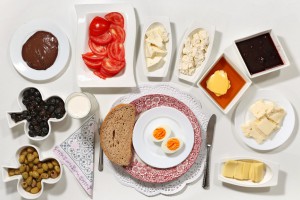
Typical kid’s breakfast in Istanbul with brown bread, hardboiled egg, olives, tomatoes, cheeses, jam, and honeyed butter.
Last week the New York Times Magazine published a slideshow about what children eat for breakfast around the world. Read the article and share with your classmates your thoughts on breakfast as a meal. Do you think its essential? Are American breakfasts too sugary? In addition, please post a picture of something you think is essential for breakfast. If possible, please take a photograph with a smartphone or digital camera, resize and upload the photo along with your post. Follow the directions to resize your photo to smaller than 600 x 700 pixels here.
Read the NYTimes article “What kids around the world eat for breakfast.”
Please post your responses by Wednesday, October 22nd.
Week 5 Discussion Topic: Walker Evans’ Subway Portraits
Walker Evans’ photographed people on the New York City subways between 1938-1941. He only published these photographs 25 years later in his book, Many Are Called, which was re-issued in 2004. Read a review about the new edition in the New York Times or listen to a radio interview of the book’s re-release and a related exhibition at the Metropolitan Museum of Art. Then look at some of Evans photographs on the Getty website. What do you think of Evans’ clandestine approach to photography? Do you see similarities between the riders’ expressions during the Depression Era to today’s riders?
NPR interview with Met curator Jeff Rosenheim (audio)
Getty Collection of Walker Evans Subway Portraits
Please post your responses by Wednesday, October 20th.
Week 4 Discussion Topic: Documenting Spiritualism
In class, we briefly touched on the beginnings of spirit photography. The contemporary photographer Shannon Taggart has photographed Lily Dale, the world’s largest Spiritualist community in western New York. Taggart gave a talk here at CityTech last spring on her work. Her photographic projects often focus on alternative types of religious experience. Taggart’s photographic work includes a project on the Haitian practice of Vodou right here in Brooklyn.
We will discuss the difficulty of producing religious imagery via photography (for example, look at F. Holland Day). For this post, I would like you to read an article of Taggart’s work in Slate and consider the difficulties of documenting spiritualism or any religious experience. Do you think such documentation possible? valuable? intrusive?
Click here for the article on Shannon Taggart’s photography “The World’s Hub for Spiritualism in a Tiny New York Town.”
You can explore her photography on her personal website shannontaggart.com here.
Please share your thoughts with your classmates by next Wednesday, October 8th.
Week 3 Discussion Topic: Photographing Food Texture
tex·ture /ˈteksCHər/ noun
|
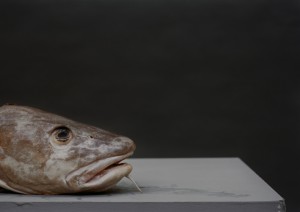
Olivier Richon, The Temptation of Saint Anthony, 2012 (from http://ibidprojects.com/olivier-richon-6/)
This week we were introduced to the wet-plate collodion process of mid-nineteenth century photography. The photo historian Helmut Gernsheim once referred to this collodion era as the “culinary period” of photography (Gernsheim, 1969, 258). Aside from the sticky collodion that photographers like Roger Fenton and Mathew Brady applied to their glass plates, photographers tried all sorts of ingredients to keep the collodion moist for longer periods of time, including treacle, malt, raspberry juice, milk, licorice juice, chestnut juice, beer, tea, and coffee.
For this week, I ask you to think about the idea of texture in food, and how does one capture texture in a photograph. The key to communicating texture in photography is to pay careful attention to detail. In this week’s post, you get to practice taking a photograph, re-sizing it, and uploading it to our class website. For example, look at the photograph by contemporary photographer Olivier Richon and note how it gives you a strong sense of the texture of the fish. Take a food-related photo (something you made or saw), resize it (follow the directions on how to resize you photo to smaller than 600 to 700 pixels here) and upload your photo to the class site with a short passage describing the texture of your photo.
Lastly, this week we also talked about the albumen process that makes use of egg whites. What happened to all those egg yolks? You can click here to see a recipe for a 19th-century photographer’s cheesecake.
My apologies for the late posting, I thought I already posted this week’s discussion topic. Because of the delay, I have extended the deadline for posting by another week.
PLEASE SUBMIT YOUR POSTS BY MONDAY OCTOBER 6, 2014.

